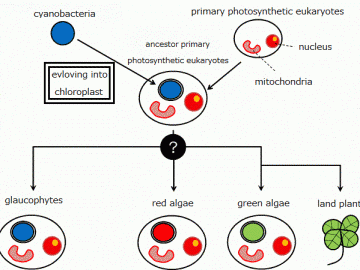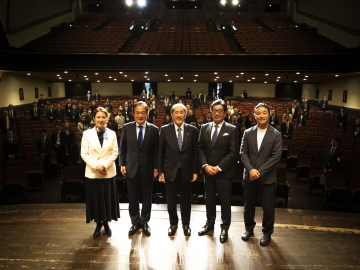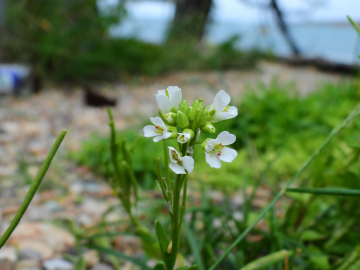Researchers discovered that, in terms of metabolic interactions, the glaucophyte Cyanophora paradoxa is the primary symbiotic algae most similar to cyanobacteria than other lineages of photosynthetic organisms.

Tokyo, Japan – Scientists have long studied which of the three primary photosynthetic eukaryotes (red algae, green algae, and glaucophytes) has come into existence first to unravel the biological mystery of algae evolution by analyzing their genetic information.
Despite learning that the structure of cyanelles, an organelle unique to glaucophytes, is most similar to the ancestral cyanobacteria among other organelles, these studies have not conclusively resolved the branching position of glaucophytes and left the early branching history of the three primary photosynthetic lineages uncertain.
A recent study by Waseda University researchers indicated that the effect of respiration on photosynthesis in the glaucophyte Cyanophora paradoxa is surprisingly similar to the interaction between respiration and photosynthesis in cyanobacteria. These results suggest that cyanelles retain many of the characteristics observed in their ancestral cyanobacteria.
“From the view point of metabolic interactions, C. paradoxa is the primary symbiotic algae most similar to cyanobacteria,” says Kintake Sonoike, a professor of plant and cell physiology at Waseda University. “Our findings provide valuable information for revealing how photosynthetic organisms evolved.”
This research is published in Scientific Reports.
The evolution of photosynthetic organisms began approximately 2.5 billion years ago when cyanobacteria came into existence and first used water molecules for photosynthesis, releasing oxygen as a by-product and changing life forms on earth. After an endosymbiosis event involving a eukaryote and a cyanobacterium, red algae, green algae and glaucophytes diverged from its common ancestor, a eukaryotic photosynthetic organism. In this long process, various metabolic interactions in cells have changed dramatically. For example, when cyanobacteria, which had performed both photosynthesis and respiration until then, evolved into chloroplast, mitochondria became responsible for respiration. Yet, there was a lack of information of these aspects in glaucophytes which needed to be addressed in order to understand the diversity of photosynthetic regulation and metabolic interaction among primary symbiotic algae.
In this study, Professor Sonoike measured chlorophyll fluorescence using a pulse-amplitude modulation (PAM) fluorometer to analyze photosynthesis in C. paradoxa, without destroying the cells, and check its interactions with metabolic reactions such as respiration. The application of such technique to algae is not easy, but being an expert in measuring fluorescence in cyanobacteria, Professor Sonoike successfully adapted the method to this research.
Fluorescence emission of chlorophyll was measured by shining different kinds of light on glaucophyte cells. As a result, the levels of nonchemical quenching (NPQ), a mechanism of algae to protect themselves from intense light, was high in the dark but decreased under low light, and increased again under high light. This implies that photosynthesis of glaucophytes is affected and changed by other metabolic reactions, even in the dark.
“Such concave light dependence was quite similar that observed in cyanobacteria,” points out Professor Sonoike. “Although glaucophytes perform photosynthesis and respiration separately with respective organelles unlike cyanobacteria, similar metabolic interactions are observed in both organisms.”
These results formulate a new theory on the effects of respiration and other metabolic reactions on photosynthesis. Such metabolic reactions are believed to slow down photosynthetic efficiency, but glaucophytes seem to use a different metabolic pathway to make up for the loss. In recent years, it was found that though plants without DNA regulation on photosynthesis can survive under certain light conditions, such plants can be easily destroyed in nature, where the amount of light depends on the environment. Taking this into consideration, a hypothesis arises that regulating photosynthesis in dark places under weak light through metabolic interactions in advance may be necessary for effective photosynthesis in nature.
Professor Sonoike plans to further investigate whether respiration, an opposing reaction to photosynthesis, could actually be helping the efficiency of photosynthesis.
For more information, you can contact professor Sonoike via email: [email protected]
Public Information
Article title: Photosynthesis in the dark? Unraveling the mystery of algae evolution
Published in: Scientific Reports
DOI: 10.1038/srep46100








